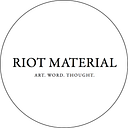Annie Leibovitz, The Early Years: 1970–1983
Reviewed by Nancy Kay Turner
Annie Leibovitz has combed through her enormous archive of negatives to personally curate and print these 4,000 (yes, that’s right) mostly black and white photographs for this poignant and profound exhibition at Hauser & Wirth. The exhibition chronicles the turbulent late sixties, the “me decade” of the seventies and the beginning of the prosperous early eighties. Printed in various sizes with some as small as 3”x5” straight from a contact sheet to later work that is printed much larger with an irregular black border (that echoed both Diane Arbus and Richard Avedon, two photographers that she admired), they are push pinned to a hemp wall in a precise grid in a sometimes curiously casual looking installation meant to evoke a kind of walk-in scrap book. These pictures are truly an amazing visual history of the way we were, while clearly indicating where we were headed.
In this labyrinthian installation, there is a tantalizing mix of rock, punk and country musicians, politicians, newscasters, scientists, writers — what we would now call “cultural producers.” Some are already famous, others are on the brink of stardom — such as a young Jack Nicholson around the time the movie Easy Rider catapulted him into iconic status — and are seen here in unscripted moments, up close and very personal. It’s a virtual who’s who of celebrities past and present. As John Lennon and Paul McCartney (who also appear in this chronicle of pictures) wrote in their song, “In My Life, “some have gone and some remain,” and that is true of many of the people captured here — some are still alive but not all. These nostalgic but unsentimental images practically demand a soundtrack to accompany the visuals.
To underscore the importance of Leibovitz’s pictures, there is a timeline, at the very beginning of the exhibition even before one sees images, of both important and seemingly unimportant events year by year from 1970–1983. This timeline culls and curates information, starting with the increase of troops to Vietnam, while in the next paragraph slyly references the very first issue of a new experimental magazine called Rolling Stone (November 9, 1967), the very same magazine that is going to catapult Leibovitz to fame and fortune.
In 1968, this fascinating and informative timeline notes that Leibovitz spends a summer in the Philipines with her family, where her father, who was an officer, was stationed. It is also this year when the then 18 year-old Leibovitz purchased her first camera — a Minolta SR-T 101. In 1969, Annie Leibovitz enrolled in a summer school photography class at San Francisco Art Institute. It was a tense and sometimes violent time. Liebowitz, a teen herself, captured the youthful passion at the People’s Park rally, which later turned deadly. On a personal note, as a graduate student at Berkeley, I was actually there at the corner of Dwight and Telegraph Avenues, when thousands of students clashed with the Alameda police (they were called “the Blue Meanies” from the Beatles animated movie Yellow Submarine). A brick was thrown, then tear gas and then came the rubber bullets. A young man named James Rector was killed while watching from a nearby rooftop.
Leibovitz was a witness to this history in the making and is there with her camera at the ready. She truly captures the chaos (sex, drugs and rock n roll), the exuberance, and the hubris of the burgeoning youth culture that also contains the foreshadowing of its own demise just a few short years later. This was the generation who said “we are the people are parents warned us about.” . . .
To read the entire review, go to Riot Material magazine: https://www.riotmaterial.com/annie-liebowitz-early-years-1970-1983/
